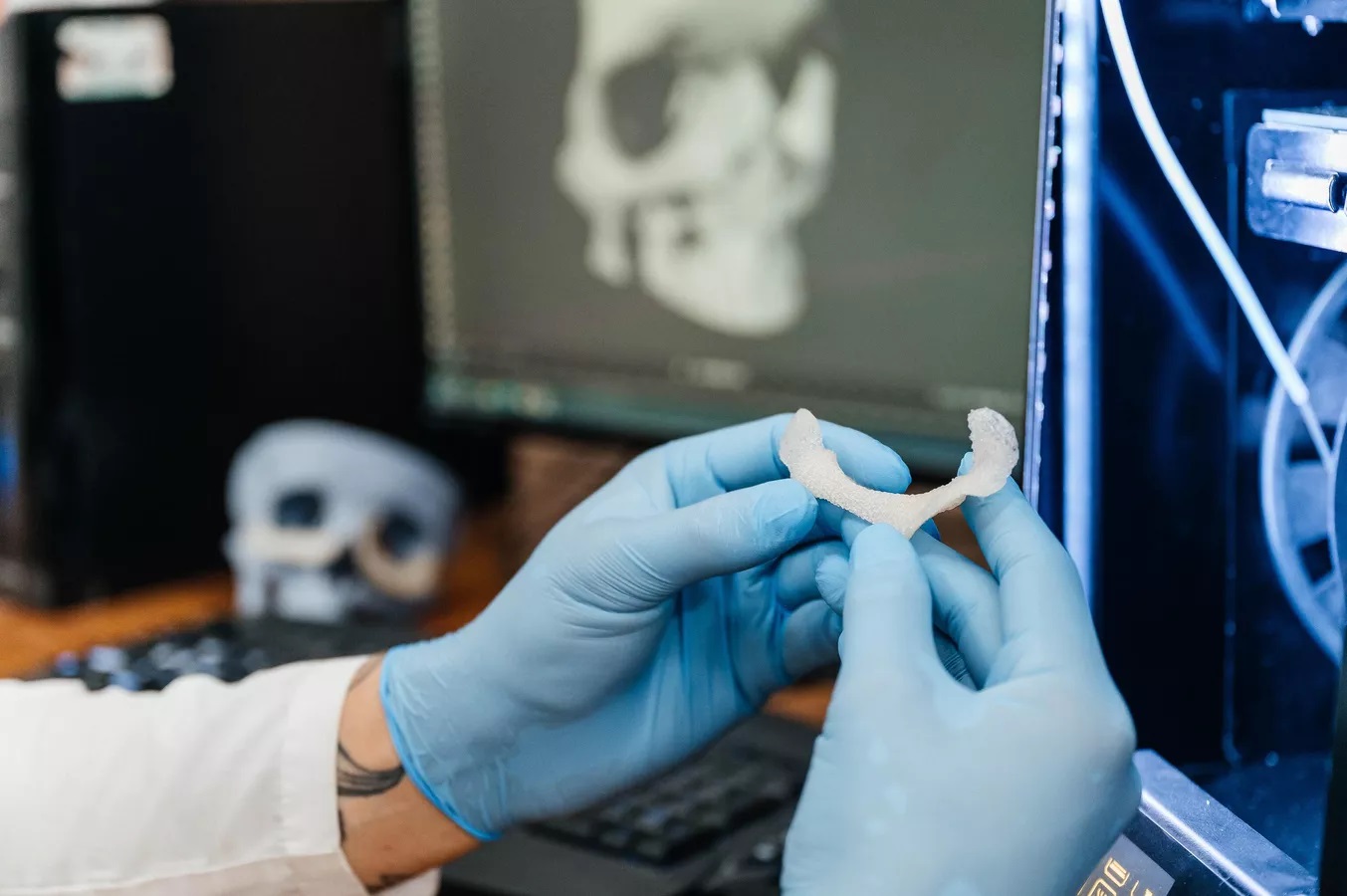The results have been published in the Materials Letters journal.
According to the authors of the study, the restoration of bone tissue defects requires a personalized approach: the implant should fit the anatomical features of each patient. To create such implants, the TPU researchers are using a 3D printing method with domestically produced fluoroplastic polymers. Fluoroplastic is a biologically inert material that excludes allergies and other negative reactions of the body to the implant. However, this polymer does not fuse well with bone tissue.
To solve this problem, scientists of Tomsk Polytechnic University coated the surface of fluoroplastic with particles of hydroxyapatite - a mineral component of bone, which promotes the attachment and proliferation of bone tissue cells. In traumatology, orthopedics and surgery, synthetic hydroxyapatite is used as a filler to replace parts of lost tissue and as a coating for implants to promote the growth of new bone. In dentistry, it is used in toothpastes to remineralize and strengthen tooth enamel.
The novelty of the method of applying hydroxyapatite particles to the surface of fluoroplastic implants developed at TPU is that it can be carried out in any chemical laboratory using exclusively Russian materials and equipment.
"Our approach is based on the treatment of the implant surface with a specially selected system of solvents. This treatment leads to the formation of a swollen polymer layer to which the hydroxyapatite particles are 'glued'," Semyon Goreninsky, a researcher at the Center for Additive Technologies of the Tomsk Polytechnic University, told RIA Novosti.
With the participation of representatives of the Institute of Cytology of the Russian Academy of Sciences and the A.F. Ioffe Institute of Physics and Technology of the Russian Academy of Sciences, scientists at Tomsk Polytechnic University found that the new method improves the attachment of human stem cells to the surfaces of hydroxyapatite implants.
"In the future, this approach can be used to create implants for the restoration of bone tissue defects (for example, in maxillofacial surgery), which will take root better in the body. It will also become more affordable. This will reduce the period of rehabilitation of patients after surgery, and they will be able to return to full life more quickly," notes Semyon Goreninsky.
He adds that similar studies have been conducted for quite a long time, but they use plasma methods that require expensive and cumbersome equipment.
In the future, scientists with the support of the Russian Science Foundation plan to solve the problem of applying hydroxyapatite to porous implants of complex shape.
